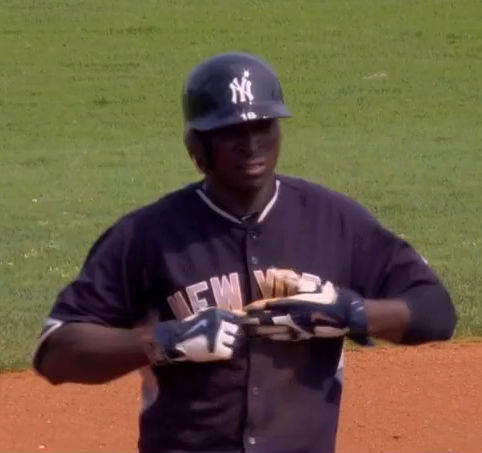When the Yankees acquired young shortstop Didi Gregorius from the Diamondbacks last December in the three-way trade that sent starter Shane Greene to Detroit, it was immediately met with some mixed reactions. While many fans were glad to see the Yankees move quickly to replace Derek Jeter with a defensive wizard who was only 25 years old rather than going out and signing an older, temporary solution, there were some who were already wringing their hands about giving up Greene.
Imagine telling a Yankees fan in June 2014 that just six months later, the team would trade Greene for a shortstop with potential. Almost everyone would have signed up for it, and there’s a high likelihood that most fans had no idea that Greene even existed. It isn’t difficult to look back upon how Greene was viewed prior to the 2014 season. Greene was absent from pretty much every “Top [X] Yankees Prospects” list imaginable. Former BP prospect guru-turned-Cubs scout Jason Parks missed. So did ESPN’s Keith Law and Baseball America. You name the prospect source, they missed it. Minor League Ball’s John Sickels went 20 deep on the Yankees’ system and still only listed Greene among “others.”
These analysts shouldn’t be mocked for missing on Greene though. He was almost a complete unknown to anyone without a decent knowledge of the Yankees’ system. Sure, he had a couple decent pitches and in 2013, displayed far better control than his previous few seasons. However, the tag of “fringe starter/reliever” was nearly impossible to avoid, particularly for a five-year minor leaguer at age 25 with only 13 starts above A-ball.
Even in Greene’s 15 games (13 starts) at Triple-A Scranton last year, his peripherals weren’t exactly blowing people away: a 4.61 ERA, 4.02 FRA, 7.7 K/9, and a 3.5 BB/9. Basically, they were just good enough to merit a call-up when the Yankees needed a spot starter after trading Vidal Nuno. Greene of course pitched well and kept that hot streak going through the remainder of the campaign.
Having now made 16 career starts in the pros with a capable arsenal of pitches, few should question whether or not Greene is a legitimate major leaguer. Are the 16 starts enough to deride the Yankees for dealing a potential future rotation asset in exchange for a light-hitting shortstop though? Considering that question is where the next few years become foggy. It’s wonderful for Greene that he’s had such a great start to his career–he has a 3.14 ERA and a 125 ERA+ through his first 16 starts. (Take note that the ERA+ is disproportionately weighted by this year since he had a 103 ERA+ last year.) He is joined by a long list of other pitchers who had similarly solid beginnings. Here are just a few of them:
- Dave Bush, 3.69 ERA and 131 ERA+ in 16 starts for the 2004 Blue Jays
- Chuck Smith, 3.23 ERA and 137 ERA+ in 19 starts for the 2000 Marlins
- Tony Cingrani, 2.92 ERA and 130 ERA+ in 23 games (18 starts) for the 2013 Reds
Bush didn’t strike out batters quite like Greene (8.5 career K/9 at the moment), but he was a decent righty who stuck around for roughly eight seasons with a career 92 ERA+. Smith was excellent in his rookie year for the Marlins, then slipped to a 4.70 ERA and 5.28 FRA the next year. Then the righthanded starter sprained his elbow, needed Tommy John surgery, and never pitched in the pros again. Cingrani’s tale obviously isn’t over yet, but after a dismal 2014 shortened by shoulder problems, he’s been converted to a reliever.
Although Greene could stay healthy and maintain his impressive rookie season numbers, was it really so wrong for the Yankees to sell high on him? Greene’s career is off to a fine start, but there’s a chance that he never pitches as well as he did in 2014 again. Since it’s easier to find starting pitching than legitimate shortstops, the Yankees should not be faulted for taking a chance on Gregorius in exchange for Greene.
